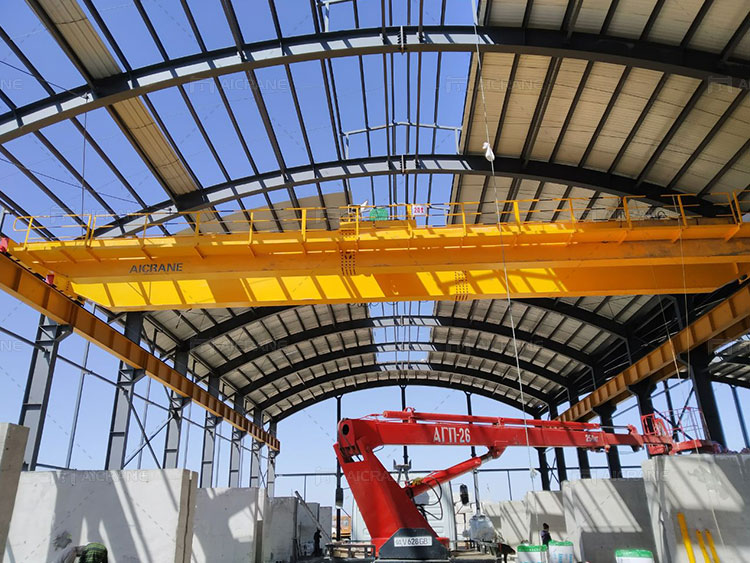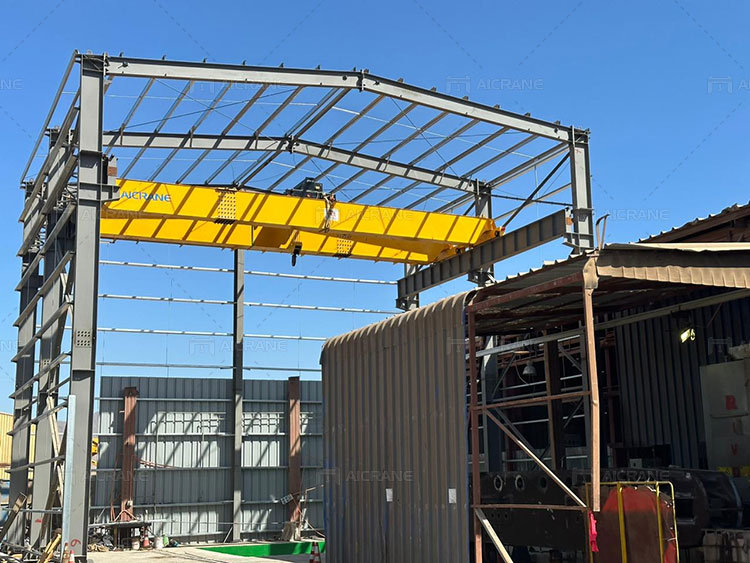In today’s competitive industrial landscape, businesses often face critical demands that require precision, efficiency, and reliability. For industries that rely on overhead lifting equipment, such as warehouses, manufacturing plants, construction sites, and port facilities, Electric Overhead Traveling (EOT) cranes play an essential role in handling heavy loads. However, when companies decide to invest in these powerful machines, one of the most important factors they must consider is the lead time for manufacturing and delivery.
Lead time refers to the total time taken from the placement of an order to the final delivery of the product. In the case of EOT cranes, this process involves design, production, assembly, testing, shipping, and installation. Understanding lead time is vital for businesses that want to plan their operations efficiently, avoid production delays, and ensure they meet critical deadlines. This article will explore the various factors that influence the lead time from EOT crane manufacturers, the process involved in its manufacturing, and strategies for reducing lead time.

What is Lead Time for EOT Cranes?
Lead time for EOT cranes is the period between the customer placing an order for the crane and receiving it for installation or use. It includes all stages of the production process, such as design, manufacturing, quality checks, assembly, shipment, and delivery to the final destination.
Generally, the lead time can vary significantly depending on the EOT overhead crane manufacturer, the type of crane, and the complexity of the customer’s requirements. Standard EOT cranes may have shorter lead times compared to customized solutions, which may take longer due to the need for specialized components or configurations.
Key Factors Affecting Lead Time
-
Type of Crane and Customization Requirements
The first factor that significantly impacts the lead time is the type of EOT crane being ordered. A standard EOT crane with a typical configuration (e.g., capacity, span, height) will usually have a shorter lead time, as the components required for production are readily available. However, if the crane is highly customized, the design and manufacturing process will take longer. For instance, specialized cranes used in specific industries such as mining or steel production require custom features that may include heavier load capacities, unique control systems, or materials that are not standard in typical crane models. -
Design Process
For custom overhead cranes, the design process can add a substantial amount of time to the lead time. This stage involves understanding the customer’s unique requirements, including the weight of the load to be lifted, the environment in which the crane will operate, and any special features or safety requirements. After this assessment, engineers create detailed plans and specifications, which may undergo several rounds of revision before they are finalized. Complex designs naturally take longer to finalize, adding to the overall lead time. -
Availability of Materials and Components
The availability of materials plays a crucial role in determining lead time. EOT cranes are built with a wide range of components, including structural steel, motors, hoists, electrical controls, and safety systems. The timely procurement of these materials is crucial to avoid delays. If certain parts need to be sourced from suppliers that are located abroad or if there are shortages of critical components, it can significantly extend the manufacturing timeline. Additionally, specialized or custom components will require more time to source or manufacture. -
Manufacturing Capacity and Workload
The capacity and current workload of the crane manufacturer also affect the lead time. Manufacturers that produce a large number of cranes annually may have a streamlined production process with readily available materials and labor, which can reduce lead times. On the other hand, manufacturers with limited production capacity or those handling multiple orders at once may have longer lead times due to scheduling conflicts and resource constraints. -
Testing and Quality Control
Before an EOT crane is shipped out, it must undergo rigorous testing to ensure it meets the required safety standards and quality benchmarks. These tests often include load testing, safety feature assessments, and inspections of the crane’s various components. The testing process can take several days to complete, especially if issues arise that need to be addressed before final approval. Quality control procedures are critical in preventing defects, but they do add to the overall lead time. -
Shipping and Delivery Logistics
Once the crane has passed testing, the next step is shipping. The geographical location of both the manufacturer and the customer plays a key role in determining delivery times. For domestic deliveries, shipping may take only a few days to a week. However, international deliveries can add several weeks to the lead time, particularly if the crane is large and requires specialized transportation methods. Customs clearance and import/export regulations can further delay the process. -
Installation and Commissioning
The lead time for EOT cranes also includes the time required for installation and commissioning. Once the crane arrives at the customer’s site, it must be installed, tested, and calibrated. While some manufacturers offer online guidance for installation, others may require onsite engineers to handle the process. The time required for installation depends on factors such as the complexity of the crane, the site conditions, and whether additional infrastructure (e.g., power supply or runway beams) needs to be set up.

How Long Does It Take to Manufacture and Deliver an EOT Crane?
While the exact lead time can vary, a typical EOT crane might take anywhere from 6 to 12 weeks to manufacture and deliver, provided the specifications are relatively standard. For more complex, customized large overhead cranes, this time frame can stretch to several months.
For example:
-
Standard EOT Cranes: Typically, 6-8 weeks for design, manufacturing, and delivery.
-
Customized EOT Cranes: Can take 12-16 weeks or longer, depending on the level of customization, special features, and size.
Strategies for Reducing Lead Time
-
Clear Communication with the Manufacturer
The clearer the communication between the buyer and the manufacturer at the initial stages, the less likely it is that revisions and delays will occur during the design and manufacturing phases. Understanding the customer’s needs and timelines upfront can help the manufacturer prioritize the order and avoid miscommunications that lead to delays. -
Standardization of Design
If your business does not have specialized needs, opting for a standard design can drastically reduce lead time. Manufacturers typically have ready-made templates for these cranes, allowing for quicker production and assembly. -
Pre-Ordering Components
In cases where long lead times are a concern, some manufacturers may offer pre-ordering of components in advance. This approach can help mitigate delays in the supply chain and allow for a quicker assembly phase. -
Leveraging Local Manufacturers
Choosing a local crane manufacturer can often shorten delivery times, as transportation and customs delays are minimized. Working with a local manufacturer can also facilitate faster on-site support and installation. -
Expediting Shipping
For urgent projects, some manufacturers offer expedited shipping options. While this may incur additional costs, it can help businesses meet tight deadlines.
Conclusion
Understanding the lead time for manufacturing and delivery from EOT crane manufacturers is a vital component of planning and managing industrial operations. Several factors influence the timeline, including the complexity of the crane, the availability of materials, the manufacturer’s workload, and shipping logistics. By carefully considering these factors and working closely with the manufacturer, businesses can reduce lead times and ensure timely delivery of their crane solutions.
In an increasingly fast-paced industrial environment, understanding how to effectively manage lead times is crucial for maintaining smooth operations, avoiding downtime, and staying competitive in the marketplace.